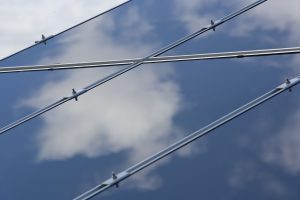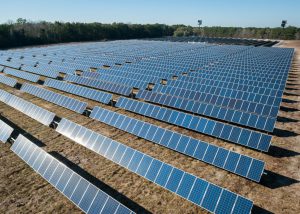Indian Solar Market- Growth
India is one of the biggest solar energy markets in the world. The Jawaharlal Nehru National Solar Mission is targeting 100,000 MW of grid connected solar power in India by 2021-22. This capacity can be achieved by installing
- 60,000 MW of large and medium scale solar projects
- 40,000 MW of rooftop solar projects
India expanded its solar-generation capacity eight times from 2014 to 2018.

In January 2016, Indian Prime Minister Narendra Modi and French President François Hollande laid the foundation stone of the headquarters of the International Solar Alliance (ISA). Situated in Gwal Pahari, Gurgaon, the ISA’s focus is on promoting and developing solar energy and solar products for countries lying wholly or partially between the Tropic of Cancer and the Tropic of Capricorn. This alliance of over 120 countries was announced at the Paris COP21 climate summit. In February 2018, all the countries in the ISA met at a one day conference at New Delhi, India.
Opportunities
The rapid growth of solar projects in India has led to many opportunities for domestic and international companies. Large scale deployment of these projects has led to increasing competition and development of solar projects at an alarming rate. In an effort to reduce the capital cost of solar photovoltaic (PV) projects, stake holders are cutting corners by buying low quality modules, inverters, and trackers to complete their projects.
Quality matters
For any power project to be profitable over the lifetime of the project, top quality of the components is paramount. Especially, for solar PV projects, where the performance of the modules degrades over time, it is especially important to maintain quality. To understand the impact of low quality equipment is installed at a typical solar PV project, we will look at the three main components
- PV module
- Inverter
- Single Axis Tracker
PV Module
The PV module is a semiconductor device (like Silicon), which uses the “photovoltaic effect”; voltage is generated due to the sun’s energy falling on the PV panel. When the voltage or potential difference is connected using a conducting material, the flow of electrons generates direct current (DC) energy. The everyday electricity we use is AC (alternating current) not DC. The DC energy from solar PV panels is converted into AC energy by inverters. An inverter provides AC energy, at around 420 volt power. In order to make the AC energy usable, it is “stepped up” to a higher voltage using a high voltage transformer.

The crystalline PV module is made of semiconductor materials. Use of low quality material results in high levels of light induced degradation during the early years of the project. SolarPV modules are covered with anti-reflective coatings to enhance the impact of the falling sunlight. Using a low grade coating increases the degradation of PV modules, which impacts the durability of the panels. The use of low quality materials and ‘short-cut’ manufacturing techniques results in quicker module degradation; this in turn leads to a low return on investment for the overall lifetime of the solar project.
Inverter
Inverters are used in other areas of technology other than solar , so, their functionality is well understood. However, not maintaining the leads of the inverters causes an increase in losses and a decrease in the efficiency of the inverter over time. Not planning for a budget to operate and maintain the inverter , reduces the availability of the solar project over its years of planned operation.
Tracker
Single axis trackers have been in use extensively in the industry. These are maintained at regular intervals, to capture the total energy output predicted at the start of the project. Trackers change the angle of the PV modules , as the sun travels overhead, to capture more sunlight. Tracker maintenance is often neglected, which results in reduced yield from the solar projects.
In summary, ambitious solar power targets India are absolutely fantastic, but we have to be careful and not support low quality projects for near term profits. We should be looking at the overall lifetime of the solar projects and reap the benefits of an abundance of solar power, also boosting returns.






Good